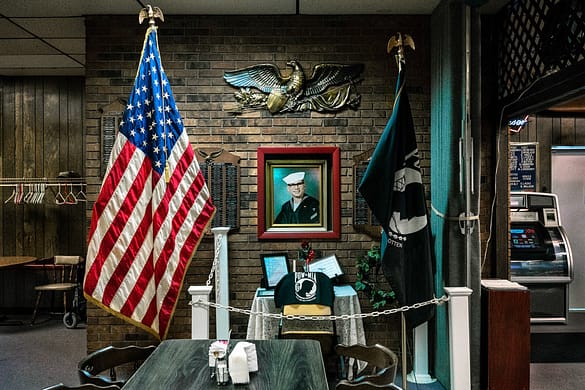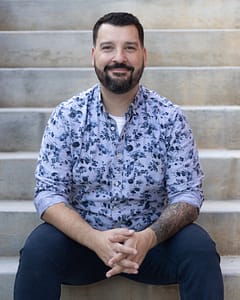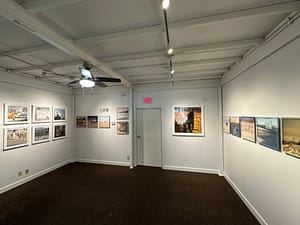As The Atlanta Photography Group’s Portfolio 2020 exhibition enters it’s final weeks, we would like to share Spotlight Interviews conducted with each of the eight artists chosen to share their work by esteemed juror Sarah Kennel – today we feature Terri Darnell
Teri Darnell is an artist who is passionate about veterans. She uses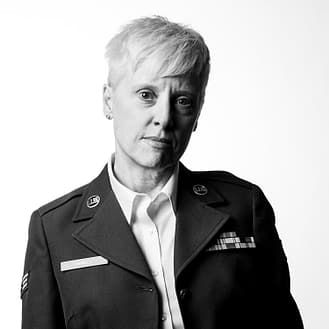 her camera to connect to places few people explore. Through inspiration she derives from casual encounters, she expresses an inward sensitivity to the lives of others. Teri served six years in the United States Air Force, notably in Berlin during the Cold War. In 2015, she retired after twenty-five years of service with a Fortune 50 company as a Multi-Media Development Manager to pursue her passion in photography.
her camera to connect to places few people explore. Through inspiration she derives from casual encounters, she expresses an inward sensitivity to the lives of others. Teri served six years in the United States Air Force, notably in Berlin during the Cold War. In 2015, she retired after twenty-five years of service with a Fortune 50 company as a Multi-Media Development Manager to pursue her passion in photography.
I sat down with Terri to discuss her body of work , Veterans in Crisis, and her process:
How does the idea of creating a full body of work influence it’s outcome and do you usually work with a project already in mind?
I don’t start off with a project already in mind while exploring opportunities to photograph people and places. Committing to creating a full body of work takes an enormous amount of time and dedication. I only pursue bodies of work that move my heart and soul. The outcome is defined by the depth of my commitment to the project.
How would you define your style?
My photography projects have focused on segments of society that often go unnoticed or are disappearing. All have a human component of struggling cultures.
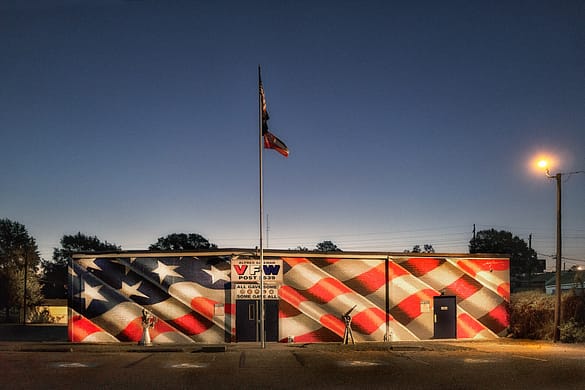
VFW Post 2539 ©Teri Darnell
What do you hope your work achieves and what аre you most proud of in this body of work?
My pictures explore uncommon, little known cultures and means of personal and human expression. I take each image with a caring reverence. My photographs reach a place in the heart that words alone are incapable of touching. My VFW project focuses on the deterioration and breakdown of places that once were pillars in our communities. My images show hope for those VFW posts that get involved in the community and remain prosperous. They also display the current state of many posts that are in disrepair and decaying – symbolic to how we treat our veterans who return from war.
War veterans have a bond of silence. Horror stories are usually only shared among those who served in war. Without camaraderie and support, these memories percolate and often cause anger, depression, lack of sleep, and many other symptoms that can lead to suicide. Photographs have the power to begin conversations about the untreated silence that hasn’t healed. Images have the power to recall memories and discuss traumatic situations. Veterans’ war experiences are often buried so deeply that only others who share similar wounds can help them heal. We are losing the places that were once the support structure for veterans to overcome their war tragedies. Problems that they continuously ignore often come back to haunt them. Veterans desperately need the support of their local VFWs to integrate back into their communities.
My images are timeless and have a significant historical importance. What you see inside may look as if the image was taken decades ago. Pictures remain a critical medium through which ideas for change propagate across our cultural landscape. Images have a way of getting people to believe in a cause and to do something about it to make a positive difference.
VFW posts are in view as we drive by them but not typically seen or thought about. Today, they are mostly a forgotten part of American history. My images propose the question: ‘If VFW posts are not the answer to help veterans in current times, then what is the solution?’ My project acknowledges that veterans are in a crisis, the images and stories provoke thought, but they do not solve the problem. I hope the project will help create a national conversation about what we can all do to provide more support for our veterans, especially those who need mental health care and are not currently receiving it.
What was the most powerful work of art you recall viewing? Where was it? How did it make you feel?
The photographs and documents at the Topography of Terror Museum in Berlin illustrate the history from the time the Nazis took power until the end of the war. Information lecterns with photos, documents and 3-D graphics provide an historic overview of the grounds where the most important institutions of National Socialist persecution and terror took place. Today, I feel like our country is losing sight of the significant sacrifices our military makes to secure our freedom and defend our democracy against foreign powers so we don’t have the same thing happen to us. If we lose sight of the importance of our military and veterans, we become vulnerable to foreign powers ruling our nation.
If you could tell your viewers one thing, what would you tell them?
Open your heart and help support your local artists.
To learn more about Teri Darnell and view her work check Portfolio 2020
by Donna Garcia
